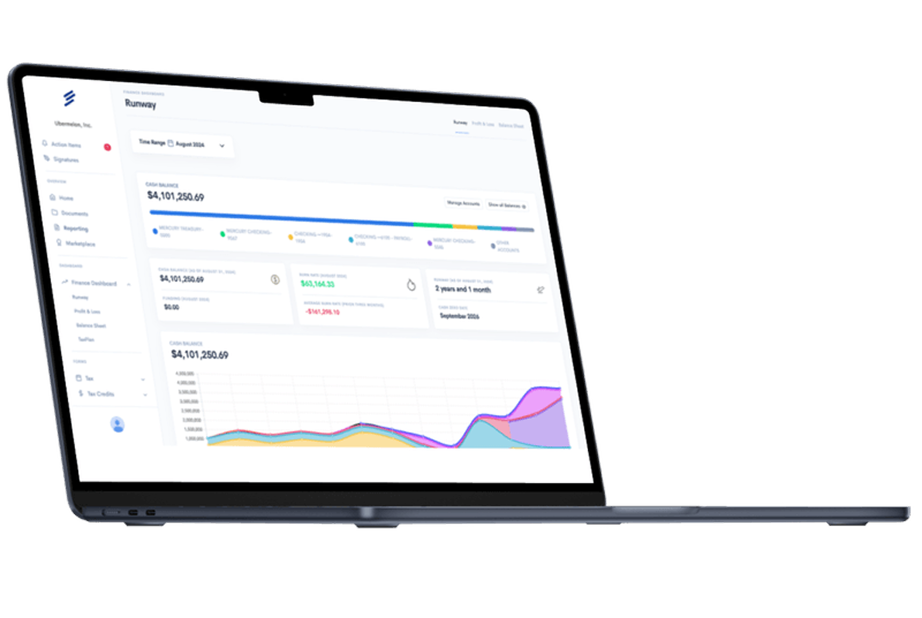Many small businesses face the daunting challenge of rising employee health care coverage costs while trying to remain competitive.
Many small businesses face the daunting challenge of rising employee health care coverage costs while trying to remain competitive. Small business owners often struggle with managing employer health insurance premiums and ensuring that employees have access to a qualified health plan without breaking their budgets. Fortunately, understanding and utilizing Form 8941 — the Credit for Small Employer Health Insurance Premiums — can provide a much-needed solution, helping business employers offset the cost of employee health insurance premiums and reduce overall tax liabilities on the annual income tax return.
In today's competitive marketplace, business owners and Tax-exempt organizations alike must navigate complex rules and eligibility criteria. Whether you are a sole proprietors, a Tax-exempt employer, or manage a public company, awareness of your eligibility requirements and maintaining detailed records such as payroll records and historical payroll records is crucial. This comprehensive guide on health insurance tax credits explains everything you need to know about annual wages, employee health insurance coverage, and the process of calculating the maximum credit available through Form 8941.
What Form 8941 Means For Your Business
Form 8941 serves as a financial lifeline for small employers struggling with healthcare costs. This crucial tax document allows eligible businesses to claim substantial credits against their tax obligations when providing health insurance to employees. The form works by calculating credits based on several factors including premium costs, employee count, and average annual wages.
Understanding the mechanics of Form 8941 can transform your approach to employee benefits. When properly utilized, this credit can offset up to 50% of premium costs for small businesses and up to 35% for tax-exempt organizations. These savings directly impact your bottom line, potentially freeing thousands of dollars that can be reinvested into your business operations or expansion efforts.
Many business owners overlook this valuable opportunity simply because the process seems intimidating. However, breaking down the form into manageable components makes it accessible even without extensive tax expertise. The key lies in organizing your information systematically and understanding which expenses qualify for the credit calculation.
Eligibility Requirements For Small Employers
Navigating eligibility criteria represents the first crucial step toward claiming your health insurance tax credit. The Internal Revenue Service (IRS) has established specific parameters that determine which businesses qualify for this valuable tax benefit. Understanding these requirements helps you determine if your business can take advantage of this opportunity.
To qualify for the Form 8941 credit, your business must meet these fundamental criteria:
- Fewer than 25 full-time equivalent (FTE) employees for the tax year
- Average annual wages below $58,000 per FTE (adjusted annually for inflation)
- Payment of at least 50% of employee-only health insurance premiums
- Provision of coverage through a qualified health plan
The credit calculation includes a sliding scale that provides maximum benefits to the smallest employers with the lowest average wages. Businesses with 10 or fewer employees and average annual wages below $27,000 typically receive the highest percentage credit. As employee count and average wages increase, the available credit gradually phases out.
Remember that seasonal workers generally don't count toward your FTE total unless they work more than 120 days during the tax year. This exception benefits businesses with significant seasonal staffing fluctuations, particularly in retail, hospitality, and agricultural sectors.
Calculating Full-Time Equivalent Employees
Determining your exact FTE count requires more than simply tallying your workforce. The IRS uses a specific calculation method that accounts for both full-time and part-time employees. This calculation ensures fair treatment across different business staffing models.
The FTE calculation begins with identifying your full-time employees who work at least 40 hours weekly. Each full-time employee counts as one FTE toward your total. For part-time employees, you'll need to calculate the aggregate hours worked and divide by 2,080 (representing full-time hours for a year) to determine their FTE contribution.
This calculation method prevents businesses from being penalized for employing part-time workers. Without this adjustment, companies with numerous part-time staff would exceed the 25-employee threshold despite having comparable labor hours to smaller full-time workforces. The IRS provides detailed worksheets in the Form 8941 instructions to simplify this calculation process.
Maximizing Your Health Insurance Tax Credit
Strategic planning can substantially increase your eligible tax credit amount. Businesses that understand the nuances of Form 8941 calculations can implement practices that optimize their credit potential while maintaining compliance with all regulations. This approach transforms healthcare expenses from pure cost centers into strategic tax planning opportunities.
The credit calculation incorporates multiple variables including premium payments, employee count, and wage levels. By carefully managing these factors, you can potentially increase your eligible credit percentage. For example, restructuring compensation packages to include more non-wage benefits might help maintain average wages below threshold levels that would reduce credit eligibility.
Your credit calculation must include these essential components:
- Determine your total qualifying health insurance premiums paid for the tax year.
- Calculate your FTE count using the IRS methodology for both full and part-time employees.
- Compute your average annual wages by dividing total wages by your FTE count.
- Apply the appropriate credit percentage based on your business size and average wages.
Remember that state premium subsidies or tax credits must be subtracted from your premium costs before calculating the federal credit. This prevents "double-dipping" on government benefits for the same expenses. Maintaining meticulous records of all premium payments throughout the year simplifies this calculation process.
Documentation Requirements For Claims
Proper documentation serves as your protection against potential audit challenges. The IRS may request verification of your credit claim, making comprehensive record-keeping essential for all businesses utilizing Form 8941. These records substantiate both your eligibility and credit calculation accuracy.
Your documentation should include complete payroll records showing hours worked, wages paid, and employment dates for all staff members. These records enable accurate FTE calculations and average wage determinations. Additionally, maintain all health insurance premium payment records, including employer and employee contribution amounts for each coverage period.
For businesses using insurance brokers or third-party administrators, request detailed premium breakdowns that clearly distinguish between different coverage types. This separation helps identify which premium portions qualify for the credit calculation. Many payroll and benefits management systems can generate reports specifically designed for tax credit documentation.
Strategic Implementation For Business Owners
Implementing an effective health insurance tax credit strategy requires coordination across multiple business functions. Financial planning, human resources, and tax compliance must work together to maximize benefits while maintaining regulatory compliance. This integrated approach yields the best results for your business.
Begin by consulting with qualified tax professionals who understand the nuances of Form 8941. Their expertise helps identify optimization opportunities specific to your business structure and employee demographics. This consultation often reveals credit eligibility that business owners might otherwise miss due to complex calculation requirements.
Consider these implementation approaches for maximum benefit:
- Evaluate different health plan options to balance quality coverage with premium costs
- Review employee classification and scheduling practices to optimize FTE calculations
- Implement systematic record-keeping procedures specifically for tax credit documentation
- Coordinate with payroll systems to generate appropriate wage and hour reports
Many businesses benefit from establishing a regular review schedule for their health insurance arrangements. Market conditions, employee needs, and regulatory requirements evolve constantly, making periodic reassessment valuable for maintaining optimal tax credit eligibility.
Timing Considerations For Maximum Impact
Strategic timing decisions can significantly impact your available credit amount. The tax year timing of premium payments, employee hiring decisions, and wage adjustments all influence your ultimate credit calculation. Understanding these timing effects helps optimize your tax planning approach.
For businesses near the eligibility thresholds, carefully timing major staffing changes can preserve credit eligibility. For example, delaying new hires until the beginning of a new tax year might keep your FTE count below critical thresholds for the current year. Similarly, structuring bonus payments strategically helps manage average wage calculations that affect credit percentages.
Premium payment timing also matters for cash-basis taxpayers. Accelerating December premium payments into November or delaying January payments until February can shift expenses between tax years. This flexibility helps maximize credit utilization, particularly for businesses experiencing significant year-to-year profitability changes.
Common Pitfalls To Avoid With Form 8941
Even well-intentioned business owners make mistakes when claiming health insurance tax credits. Understanding common pitfalls helps you avoid errors that might trigger IRS scrutiny or reduce your eligible credit amount. These preventative measures protect both your credit claim and your peace of mind.
One frequent mistake involves misclassifying workers as independent contractors rather than employees. The IRS applies specific tests to determine proper worker classification, and misclassification can invalidate your credit claim. Ensure all workers are properly categorized according to IRS guidelines before calculating your FTE count and average wages.
Another common error involves incomplete premium documentation. The IRS requires verification that employers paid at least 50% of employee-only coverage costs. Without proper documentation showing both employer and employee contribution amounts, your credit claim may be disallowed during an audit. Maintain detailed premium payment records that clearly demonstrate compliance with this requirement.
Many businesses also overlook the credit's interaction with other tax benefits. The Form 8941 credit reduces your deductible business expenses for health insurance premiums. This means you cannot claim both the full premium deduction and the tax credit for the same expenses. Your tax professional can help calculate which approach provides the greatest overall tax benefit.
Leveraging Technology For Compliance
Modern technology solutions streamline the complex process of tracking and calculating health insurance tax credits. These tools reduce administrative burden while improving accuracy, making Form 8941 compliance more manageable for busy business owners. Leveraging appropriate technology represents a wise investment for tax-conscious employers.
Specialized accounting software now includes modules specifically designed for tax credit calculations. These programs automatically track relevant metrics like employee hours, wages, and premium payments throughout the year. When tax season arrives, the software generates accurate credit calculations based on this accumulated data.
Consider integrating these technological solutions into your tax planning strategy:
- Cloud-based payroll systems that track hours worked and calculate FTE totals automatically.
- Benefits administration platforms that document premium payments and contribution percentages.
- Tax preparation software with built-in Form 8941 calculation capabilities.
- Document management systems that securely store required substantiation records.
The investment in appropriate technology typically pays for itself through improved credit calculations and reduced administrative time. Many business owners report discovering additional credit eligibility they would have missed using manual calculation methods. This technology advantage becomes particularly valuable for businesses with complex staffing arrangements or multiple health plan options.
Health Insurance Options For Maximum Credits
Your choice of health insurance plan directly impacts your available tax credit amount. Different coverage options vary in premium costs, employee satisfaction, and credit eligibility. Understanding these variations helps you select plans that balance comprehensive coverage with maximum tax benefits.
Small Business Health Options Program (SHOP) marketplace plans often provide optimal tax credit eligibility. These plans meet all qualified health plan requirements while offering competitive premium rates. The SHOP marketplace also simplifies administration through standardized reporting that aligns with Form 8941 requirements.
When evaluating health insurance options, consider these factors that influence your potential tax credit:
- Premium cost variations between different coverage levels
- Employer contribution requirements for different plan types
- Administrative support for tax documentation and compliance
- Employee participation requirements that affect eligibility
Remember that premium costs represent just one factor in your overall healthcare strategy. Employee satisfaction, coverage quality, and administrative simplicity also contribute to the true value of your health benefits program. The ideal approach balances these considerations while maximizing available tax credits.
Claim Your Health Insurance Tax Credits Today
The Form 8941 health insurance tax credit represents a significant financial opportunity for small businesses committed to employee wellbeing. This valuable tax benefit rewards employers who prioritize healthcare coverage despite challenging market conditions. Taking action now ensures you capture all available credits for your business.
Begin by gathering your payroll records, premium payment documentation, and current health plan information. These materials provide the foundation for determining your eligibility and calculating your potential credit amount. Many business owners discover substantial credit eligibility they previously overlooked simply by organizing this information systematically.
The investment in understanding and claiming your health insurance tax credit delivers multiple benefits. Beyond the immediate tax savings, you'll develop improved record-keeping practices, gain deeper insight into your compensation structures, and potentially discover additional tax planning opportunities. These complementary benefits enhance your overall business financial management.
Remember that tax regulations evolve regularly, making ongoing education essential for maximizing your benefits. Stay informed about changes to credit calculations, eligibility requirements, and documentation standards. This proactive approach ensures you capture all available credits while maintaining full compliance with current regulations.
Your business deserves every available tax advantage when providing valuable health benefits to employees. Form 8941 represents one of the most significant opportunities to reduce your tax burden while supporting your team's wellbeing. Take the first step today by exploring your eligibility and potential credit amount – your business finances and your employees will both benefit from your initiative.
Take Action On Your Small Business Tax Credits
The Form 8941 health insurance tax credit represents a powerful financial tool that remains underutilized by many eligible small businesses. By understanding the requirements, maintaining proper documentation, and implementing strategic planning, you can transform this opportunity into substantial tax savings for your company. These savings directly impact your bottom line while supporting your commitment to employee health benefits.
Remember that claiming this credit doesn't require extraordinary expertise – just organized information and attention to detail. The basic requirements focus on business size, average wages, and premium contributions that many small employers already meet. Taking the time to explore your eligibility could reveal thousands of dollars in available tax benefits that directly strengthen your financial position.
Consider scheduling a consultation with your tax professional specifically focused on Form 8941 eligibility. This targeted discussion can quickly identify your potential benefits and outline the documentation needed to support your claim. Many business owners discover that they've been eligible for years without realizing it, making this consultation potentially one of your most valuable financial planning sessions.
Simplify Startup Finances Today
Take the stress out of bookkeeping, taxes, and tax credits with Fondo’s all-in-one accounting platform built for startups. Start saving time and money with our expert-backed solutions.
Get Started









.png)









